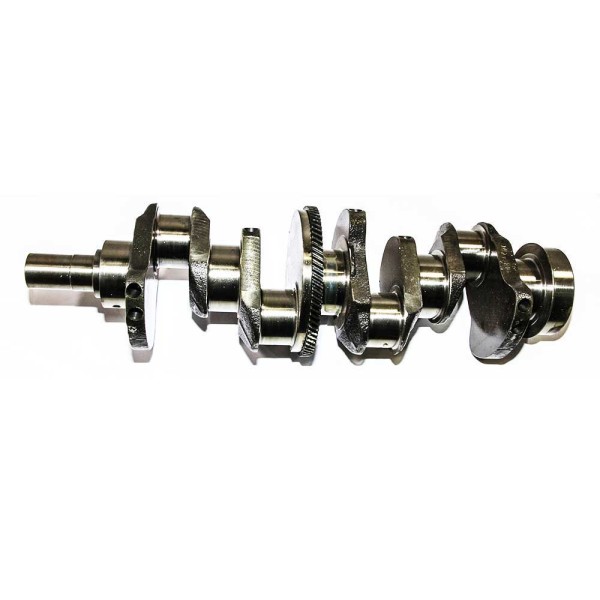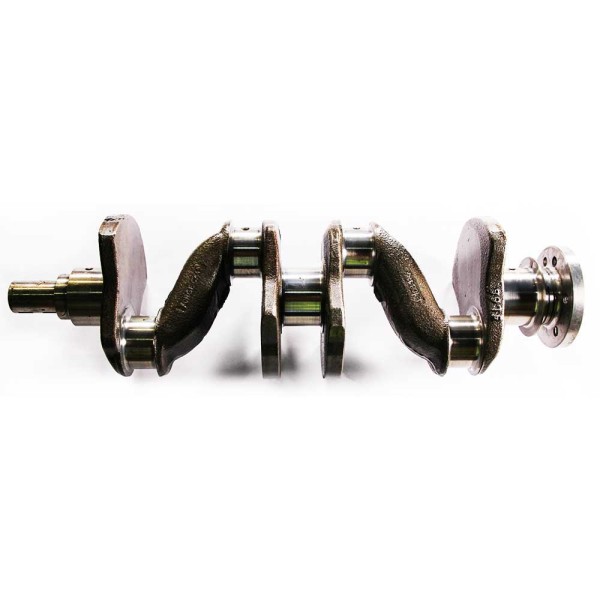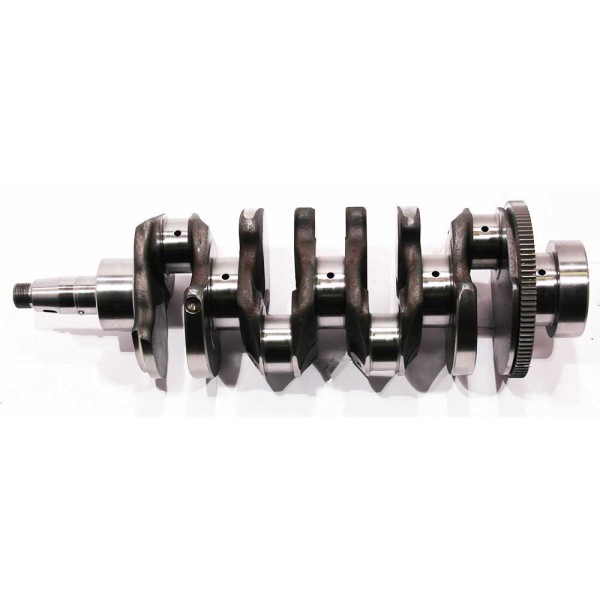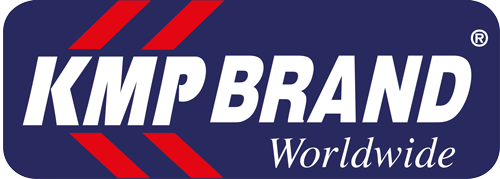KMP Brand ® Replacement
CRANKSHAFTS
KMP® Crankshafts



order crankshafts:
UNDERSTANDING THE CRANKSHAFT
Structure and Function of the Crankshaft
- Main Journals:These are the cylindrical sections that rest in the engine block’s main bearing housings, supporting the entire crankshaft’s weight and providing a surface for rotation.
- Crankpins: These are offset from the main journals and connect to the connecting rods of the engine. As the crankshaft rotates, the pistons’ movement is converted into rotational motion via these crankpins.
- Counterweights: Positioned between the main journals and crankpins, counterweights help balance the crankshaft’s weight distribution, reducing vibrations and ensuring smoother operation.
- Oil Passages: Integrated channels within the crankshaft allow for the distribution of engine oil to lubricate the moving parts.
What happens when a Crankshaft fails?
Causes of a Broken Crankshaft
- Excessive stress: Overloading the engine or sudden, severe impacts can lead to crankshaft failure.
- Material fatigue: Over time, cyclic loading and temperature fluctuations can weaken the crankshaft’s structure, eventually leading to a break.
- Poor maintenance: Inadequate lubrication and maintenance practices can accelerate wear and contribute to failure.
Signs of a Failing Crankshaft
- Unusual engine noises, such as knocking or clunking sounds.
- Vibration and shaking during operation.
- Decreased engine power and efficiency.
- Excessive smoke emissions or engine overheating.
- Warning lights on the dashboard indicating engine issues.
Replacement Engine crankshafts
Crankshafts are vital components in any internal combustion engine. When a crankshaft wears out or becomes damaged due to factors like excessive stress or poor maintenance, replacement is essential.
Choosing the right replacement crankshaft is crucial to restoring optimal engine performance. It should be made from high-quality materials to withstand the rigors of engine operation, and its dimensions must match the engine’s specifications precisely. Replacing a damaged or worn crankshaft can prevent further engine damage, reduce vibrations, and restore power and efficiency.
At KMP, our crankshafts are engineered to meet rigorous quality standards and are a cost-effective alternative. As part of the design process we measure the journal diameters of our crankshafts, taking multiple readings at different points using a digital micrometer – this ensures precision engineering of our crankshafts, so you can be confident your replacement part will fit. Our crankshafts undergo meticulous precision balancing, heat treatment, and are engineered for exacting journal grinding. This stringent process ensures a precise bearing fit, minimising friction and enhancing overall performance.
Whether you’re working on an agricultural engine or industrial equipment, investing in a quality replacement crankshaft ensures long-term reliability and performance.
Find out more about our Quality Procedures
